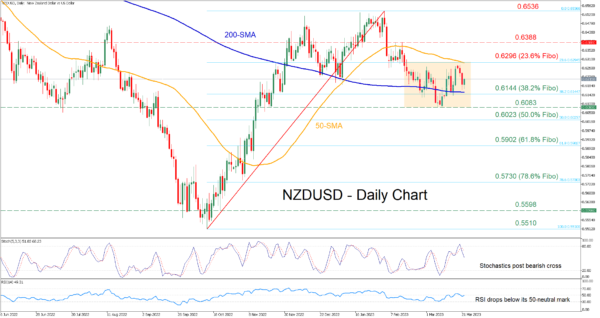NZDUSD lost ground after peaking at the 2023 high of 0.6536 in early February. Nevertheless, the pair managed to halt its retreat and has been moving sideways within a rectangle pattern for more than a month now.
The momentum indicators currently suggest that near-term risks are tilted to the downside. Specifically, the stochastic oscillator has posted a bearish cross, while the RSI failed to reclaim its 50-neutral mark after breaking below it for the first time in the past seven days.
Should bearish pressures intensify, the price could initially test 0.6144, which is the 38.2% Fibonacci retracement of the 0.5510-0.6536 upleg. If that barricade fails, the 2023 low of 0.6083 might act as the next line of defense. Failing to stop there, the pair could face the 50.0% Fibo of 0.6023.
Alternatively, should buyers re-emerge and push the price higher, immediate resistance could be met at the 23.6% Fibo of 0.6296, which overlaps with the 50-day simple moving average (SMA). Escaping the rangebound pattern, the pair might ascend towards the February resistance of 0.6388. A violation of that territory could set the stage for the 2023 high of 0.6536.
Overall, NZDUSD seems to be in a consolidation phase, waiting for developments that could provide fresh directional impetus. Therefore, a break above or below this sideways pattern is likely to be followed by a significant move in the same direction.













